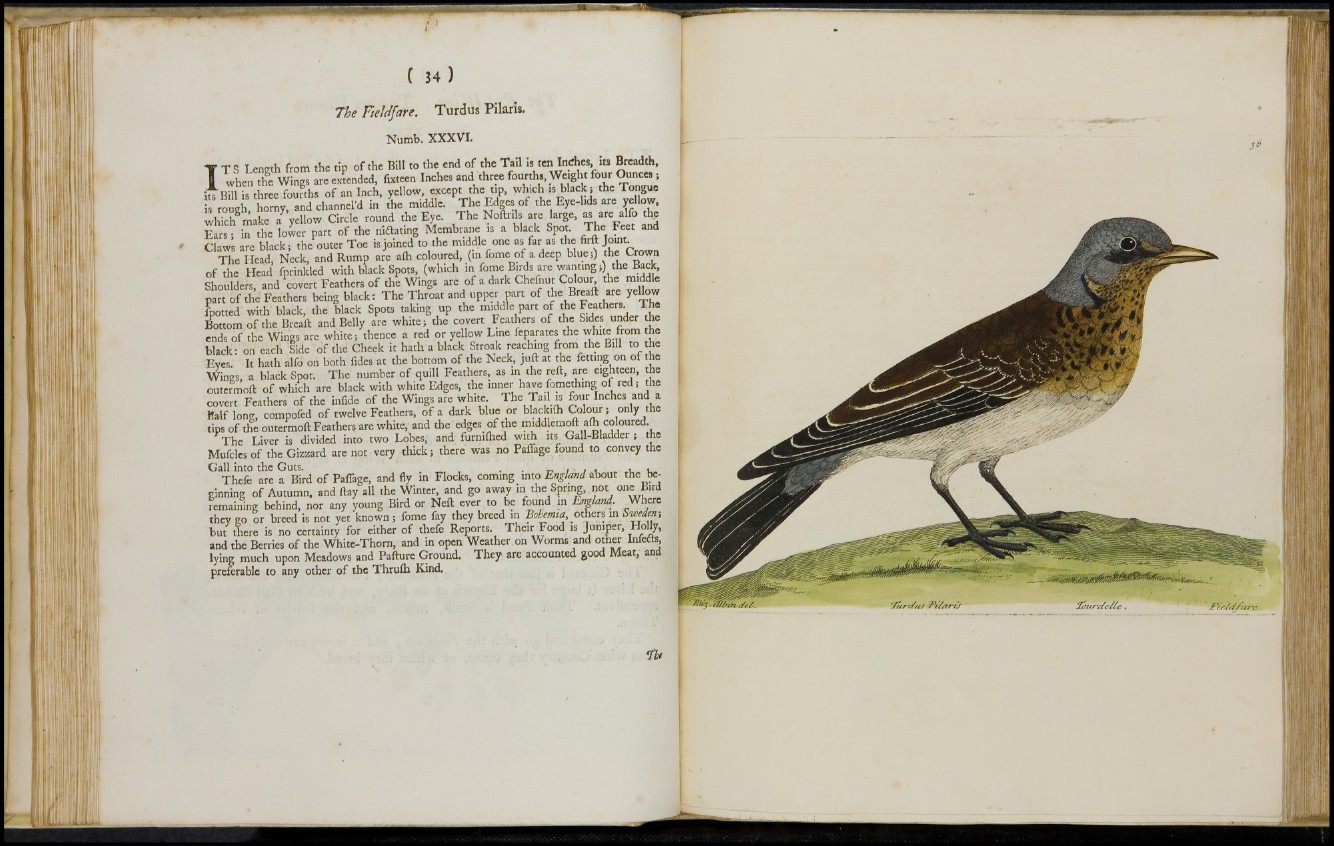
The Fieldfare. Turdus Pilari*.
Numb. XXXVI.
IT S Length from the tip of the Bill to the end of the Tail is ten Inches, its Breadth,
when the Wings are extended, fixteen Inches and three fourths, Weight
its Bill is three fourths of an Inch, yellow, except the tip, which is black ; the Tongue
rough, horny, and channel* in the middle. The Edges of the Eye-l.ds are yellow,
whTch make a yellow Circle round the Eye. The Noftrils are large, as are alfo the
Ears ; in the lower part of the niflating Membrane is a black Spot. The Feet and
Claws are black; the outer Toe is joined to the middle one as far as the firft Joint.
The Head, Neck, and Rump are aih coloured, (in fome of a deep blue;) the Crown
of the Head fprinkled with black Spots, (which in fome Birds are want;ing;) theiBack,
Shoulders, and covert Feathers of the Wings a r e of a dark Chefout Colour, the middk
part of the Feathers being black: The Throat and upper part of the Breaft are yellow
ibotted with black, the black Spots taking up the middle part of the Feathers. The
Bottom of the Breaft and Belly are white; the covert Feathers of the Sides under the
ends of the Wings are white; thence a red or yellow Line feparates the white from the
black- on each Side of the Cheek it hath a black Stroak reaching from the Bill to the
Eves. It hath alfó on both fides at the bottom of the Neck, juft at the fctting on of the
Wings, a black Spot. The number of quill Feathers, as in the reft, are eighteen, the
outermoft of which are black with white Edges, the inner have fomething of red ; the
covert Feathers of the infide of the Wings are white. The Tad is four Inches and a
lfalf long, compofed of twelve Feathers, of a dark blue or blackiih Colour; only the
tips of the outermoft Feather? are white, and the edges of the middlemoft afo coloured.
The Liver is divided into two Lobes,' and furmihed with its Gall-Bladder ; the
Mufcles of the Gizzard are not very thick; there was no Paffage found to convey the
Gall into the Guts. ’ ■ . . _ , , . , „ . ,
Thefe arc a Bird of Paffage, and fly in Flocks, coming into England about the beginning
of Autumn, and ftay all the Winter, and go away m the Spring, not one Bird
remaining behind, nor any young Bird or Neft ever to be found in England. Where
they go or breed is not yet known ; fome fay they breed in Bohemia, others m S-weden-,
but there is no certainty for either of thefe Reports. Their Food is Juniper Hofly,
and the Berries of the White-Thorn, and in open Weather on Worms and other Infefls,
lying much upon Meadows and Pafture Ground. They are accounted good Meat; and
preferable to any other of the Thrufh Kind.